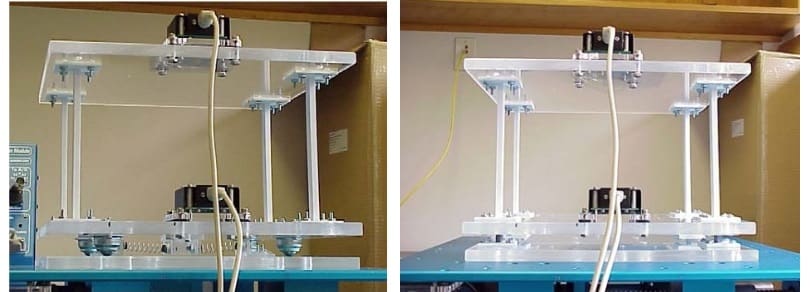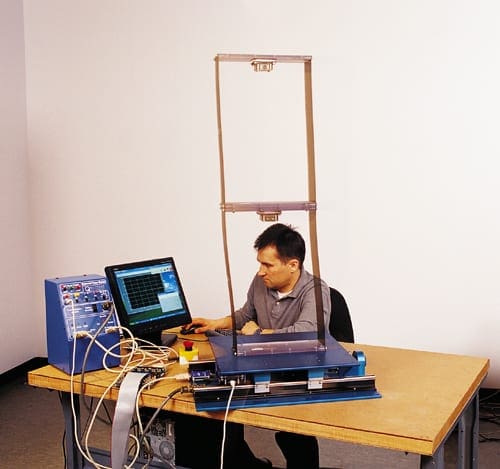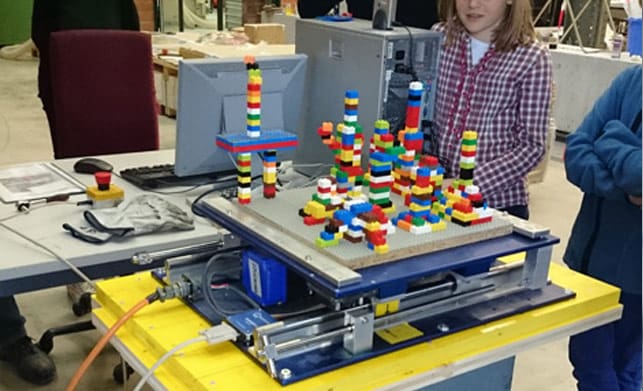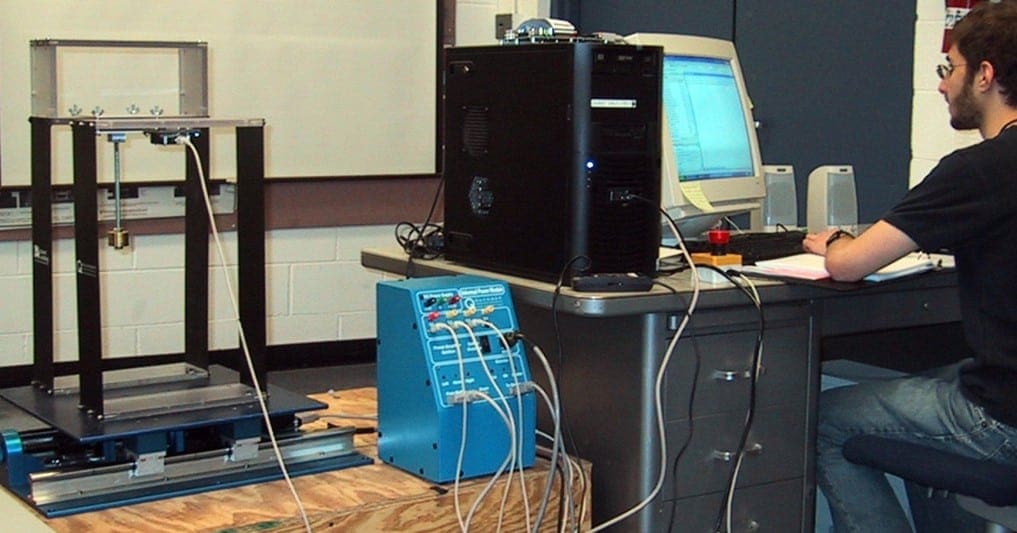
For some twenty years, Quanser Shake Tables are helping civil engineering students grasp complex concepts of structural dynamics and earthquake engineering more quickly and thoroughly. Engaging, hands-on experiments allow them to leap past dry theory and ‘experience’ an earthquake in safety of the lab. Inspired by Dr. Shirley Dyke, the driving force behind the University Consortium on Instructional Shake Tables (UCIST), the original offering for structural engineering teaching and research grew from the Shake Table II to a whole line of solutions. Today, with four different platforms, we can accommodate a wide range of requirements on the shake table acceleration, payload, and movement, for applications in structural engineering or mechanical engineering.
In the new blog series focused on structural dynamics and earthquake engineering, we want to share the wide range of applications of our Shake Table platforms. We are also interested in exploring future trends in education and research in these areas. Today, I’d like to start with some examples.
Easy to use, portable and ideal for teaching
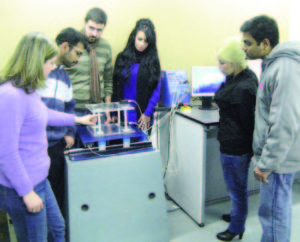 The University of Eastern London’s School of Architecture, Computing, and Engineering (ACE) uses the Shake Table II in a number of study areas, including the determination of natural frequencies in multi-DOF structures, and the seismic response of building frames. The Shake Table II provides students with valuable, hands-on experimental experience along with a better understanding of the theoretical concepts presented in ACE’s Civil Engineering courses. For researchers, it means expanding their work in such areas as the seismic response of base-isolated structures and soil-structure interaction.
The University of Eastern London’s School of Architecture, Computing, and Engineering (ACE) uses the Shake Table II in a number of study areas, including the determination of natural frequencies in multi-DOF structures, and the seismic response of building frames. The Shake Table II provides students with valuable, hands-on experimental experience along with a better understanding of the theoretical concepts presented in ACE’s Civil Engineering courses. For researchers, it means expanding their work in such areas as the seismic response of base-isolated structures and soil-structure interaction.
Dr. Mihaela Anca Ciupala, Senior Lecturer at ACE, cites several reasons why they added the Shake Table II to their lab. “It’s ideal for teaching purposes because it is easy to use, accessible, portable. And since it has simple software operation, it helps a large number of students to understand and complete projects in a relatively short time.”
Making abstract seismic concepts easier to understand
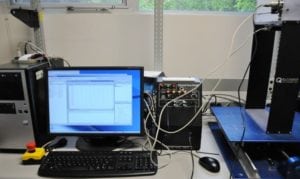 Alaska felt the terrible effects of at least one catastrophic earthquake in the past, and with an eye to preventing serious damage in the future, Dr. Zhaohui Yang, Chair of the Civil Engineering Department at the University of Alaska Anchorage wanted to help the general public experience a vivid demonstration the nature of seismic destruction. He and his students created a series of mini-laboratories to showcase structural and geotechnical aspects of earthquake damage. They show, for example, the effects of a mass damper on a one-story building, as well as the effects of liquefaction on a one-story building. According to Professor Yang, these simulations “provided a real-world model of an otherwise abstract concept, making it easier for the general public to understand.”
Alaska felt the terrible effects of at least one catastrophic earthquake in the past, and with an eye to preventing serious damage in the future, Dr. Zhaohui Yang, Chair of the Civil Engineering Department at the University of Alaska Anchorage wanted to help the general public experience a vivid demonstration the nature of seismic destruction. He and his students created a series of mini-laboratories to showcase structural and geotechnical aspects of earthquake damage. They show, for example, the effects of a mass damper on a one-story building, as well as the effects of liquefaction on a one-story building. According to Professor Yang, these simulations “provided a real-world model of an otherwise abstract concept, making it easier for the general public to understand.”
The Shake Table II served Dr. Yang’s purposes because “it can accurately mimic seismic activity and test building seismic performance.” The Shake Table II’s small scale and portability offered additional advantages since it is simple to work with in the lab and easy to transport to public demonstration sites.
Ideal platform for collaborative projects
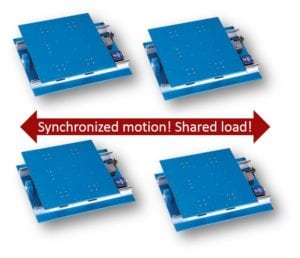 Dr. Haibei Xiong, Professor at the Tongji University’s College of Civil Engineering, acquired Tongji’s first Shake Table II in 2006 and two more in 2012. The shake tables are used for teaching, conducting structural experiments, and also for student structural competitions. Dr. Xiong finds the shake tables worthy additions to their lab for several reasons. To begin with, the shake tables’ small scale means students can do experiments easily and safely. There is no additional maintenance cost, so a lab assistant isn’t needed.
Dr. Haibei Xiong, Professor at the Tongji University’s College of Civil Engineering, acquired Tongji’s first Shake Table II in 2006 and two more in 2012. The shake tables are used for teaching, conducting structural experiments, and also for student structural competitions. Dr. Xiong finds the shake tables worthy additions to their lab for several reasons. To begin with, the shake tables’ small scale means students can do experiments easily and safely. There is no additional maintenance cost, so a lab assistant isn’t needed.
She also appreciates Quanser’s s open architecture control software, QUARC for MATLAB/Simulink, which makes it easy to control several tables at the same time. This capability was one of the reasons the school decided to acquire additional Shake Table II’s. With a total of five tables, they can conduct multi-point shaking experiments on bridge structures, or shake bigger structures using multiple shake tables.
The fact that many civil engineering schools in China are doing collaborative work with universities in North America that use the Shake Table II is another reason for the Quanser Shake Table II’s popularity and presence at Tongji University.
Flexibility for experiments
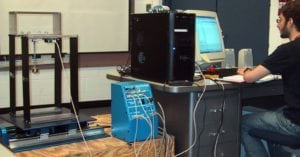
We already mentioned Dr. Shirley Dyke. In 1999, she was one of the founders of the University Consortium on Instructional Shake Tables (UCIST), a group whose goal was to introduce earthquake simulators into classroom teaching. In fact, the Shake Table II was built in cooperation with UCIST, and UCIST now recommends it as a turnkey solution for teaching structural dynamics to civil engineers.
At Purdue University, Dr. Dyke uses the Shake Table II and Active Mass Damper structures to demonstrate the dynamics of building structures to her first-year graduate students. “The system consists not only of a shake table but includes accelerometers, test structures, data acquisition, and a computer to record data and control the shake table itself,” she says. “It gives us desired flexibility in performing experiments.”
Experimental validation of research
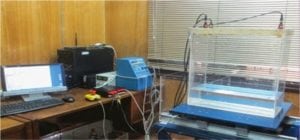 Free-surface dynamics of liquids in tanks subjected to acceleration – also known as sloshing – is an issue touching on many real-life applications, including fluid transportation and shipping, as well as design of vibration absorber devices.
Free-surface dynamics of liquids in tanks subjected to acceleration – also known as sloshing – is an issue touching on many real-life applications, including fluid transportation and shipping, as well as design of vibration absorber devices.
Researchers from the Universidad de Santiago de Chile, Chile, Universidad Nacional del Litoral, Argentina, Pontificia Universidad Catolica de Chile, Chile and Rice University, USA, studied the problem using the finite element analysis, based on solving the Navier-Stokes equations of incompressible fluids using a monolithic solver. To validate the numerical results, the research team used the Shake Table II to control the motion of a rectangular tank with ultrasonic sensors. The team published the results of their work in the Journal of Computational Mechanics, in the article titled “Finite element computation and experimental validation of sloshing in rectangular tanks.”
More Examples
There are many more examples of how teaching and research labs use the Shake Table II’s. We explored some of them in the case studies that you can find on our website. I really recommend reading about the Mobile Remote Shake Table Lab at the San Francisco State University. You can actually check the lab for yourself, remotely, of course, and run some experiments on their Shake Table. Have fun! And whether you are a Shake Table user or not, we are interested to hear what kind of applications you think shake table could be used for. Leave us a comment with your ideas/thoughts.
Some of the content of this blog post appeared previously on the older Quanser blog site.

